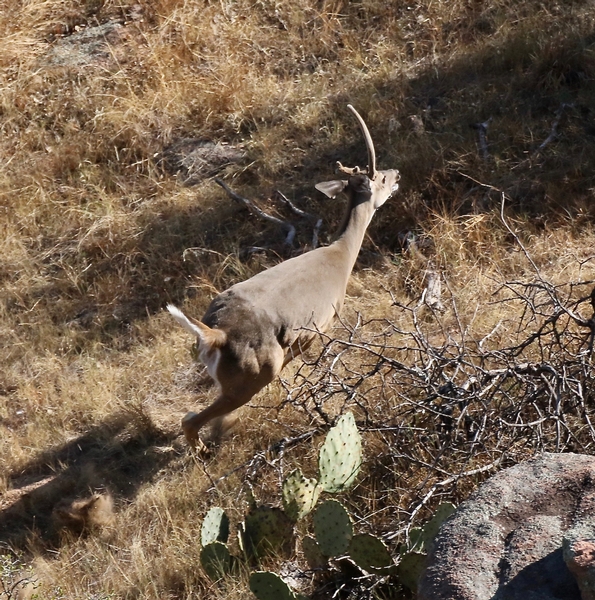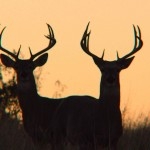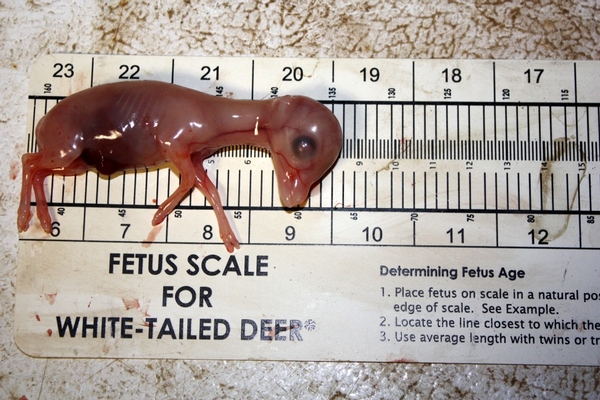
Macy Ledbetter

Velvet Antlered Bucks in the Fall
April 17, 2020 by Macy Ledbetter
I receive dozens of calls each fall from concerned hunters from central Texas, more specifically Llano, Gillespie, San Saba, Burnet and Mason counties about seeing or harvesting late season velvet antlered bucks. The condition is called hypogonadism and it affects male deer primarily in the Central Basin, or Llano Uplift ecological area. These areas are rich in granite gravel soil types and this condition tends to show up in numbers in these general areas in drier years. I have seen it outside of this area, such as this mule deer buck I harvested last fall in Jeff Davis County near Fort Davis, but it is very prevalent in male whitetail deer in central Texas.
Read More
Two Survey Methods In Great Detail
April 17, 2020 by Macy Ledbetter
If you are a practitioner of deer management and have been reading this publication very long, then you are well aware of the importance of deer surveys. Deer surveys are surveys, not inventories, meaning we likely will never know exactly how many deer are on your property nor do we need to know that exact number. Deer typically don’t want to be counted and game fences do NOT contain all of them, despite common perceptions. So a survey is done each year at approximately the same time and by the same method so that any changes in the data must be from the deer themselves. A survey is meant to provide estimates, ratios, and percentages and then used to apply harvest pressure to alter those numbers into the desired direction and levels. Texas Parks and Wildlife Department offers specialized permits to assist qualifying landowners and those permits are based on survey data. So know that survey data is mission critical for results-oriented management as well as specialized state issued management permits. TPWD has a list of approved survey methods and the three most used methods for whitetail deer include spotlight, trail camera, and helicopter. Each method has specific guidelines to be used in order for the data to be of value, but each technique also has advantages and disadvantages. For this article’s purposes, let’s look only at the spotlight and the helicopter survey method.
Read More
Axis Deer Are On the Move Near You
April 17, 2020 by Macy Ledbetter
Axis deer, or chital, or the large white spotted “fawn-looking-but bigger” deer are usually found behind high game fences—but not always. The axis deer is originally from India and was imported to Texas around 1932! This beautiful red coat with white spots and large white throat patched cervid grows antlers just like our familiar whitetail, but each antler typically only has three points per side! The beams are long and may extend upward nearly three feet off his head with a top tine creating a fork and a long brow tine jutting straight out near the head similar to an elk. Only the males have the antlers but both sexes’ coats looks the same. Seeing axis for the first time, many folks think they look like a giant whitetail fawn based on their familiar camouflage pattern.
Read More
Density
December 28, 2019 by Macy Ledbetter
Density is defined as “the amount of something per unit of measure”. The density of cattle and deer on a property are the primary factors influencing the overall production of the ranch. It is a balancing act to match the animals with the ever-changing food supply of the property. A progressive manager must react in an efficient manner if continued success is to be realized during the good and bad habitat times.
Read More
How to Determine the Rut Peak on Your Ranch
August 12, 2019 by Macy Ledbetter
Have you ever wondered exactly when the peak of the breeding season occurs on your very own hunting grounds? Are the hunting magazine articles too general and not specific enough for you? Have you read the TPWD brochure showing the eco-region peak breeding dates? All of these offer great information but some folks desire much more specifics for their own ranches. Continue reading for more information and details to help you determine the peak of the breeding season on your very own ranch.
Read More